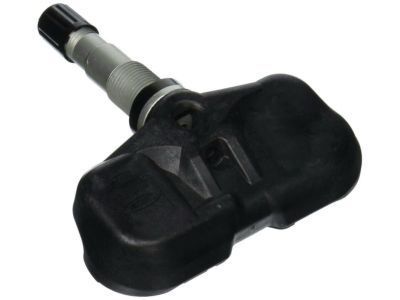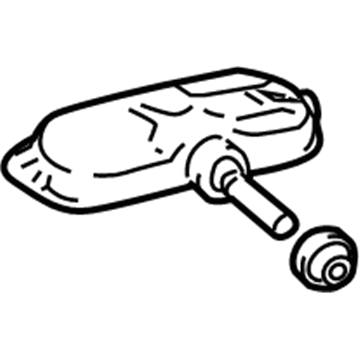×
ToyotaParts- Hello
- Login or Register
- Quick Links
- Live Chat
- Track Order
- Parts Availability
- RMA
- Help Center
- Contact Us
- Shop for
- Toyota Parts
- Scion Parts
My Garage
My Account
Cart
OEM 2010 Toyota Yaris TPMS Sensor
Tire Pressure Monitoring System Sensor- Select Vehicle by Model
- Select Vehicle by VIN
Select Vehicle by Model
orMake
Model
Year
Select Vehicle by VIN
For the most accurate results, select vehicle by your VIN (Vehicle Identification Number).
1 TPMS Sensor found
 Product Specifications
Product Specifications- Other Name: Valve Sub-Assembly, Tire; TPMS Sensor; TPMS Sensor Service Kit; Tire Pressure Sensor; Valve Stem; Tire Sensor; Pressure Sensor; Pressure Valve; Sensor
- Replaces: 42607-34020, 42607-52030, 42607-35030, 42607-52010, 42607-33010, 42607-33011, 42607-35010
- Condition: New
- SKU: 42607-33012
- Warranty: This genuine part is guaranteed by Toyota's factory warranty.
2010 Toyota Yaris TPMS Sensor
Looking for affordable OEM 2010 Toyota Yaris TPMS Sensor? Explore our comprehensive catalogue of genuine 2010 Toyota Yaris TPMS Sensor. All our parts are covered by the manufacturer's warranty. Plus, our straightforward return policy and speedy delivery service ensure an unparalleled shopping experience. We look forward to your visit!
2010 Toyota Yaris TPMS Sensor Parts Q&A
- Q: How to install the TPMS Sensor and transmitter correctly on 2010 Toyota Yaris?A: Put the tire pressure warning valve and transmitter inside the valve installation hole of the wheel rim so the printed side faces out. Complete this work from within the wheel. Inspection should reveal no visible damage or abnormalities on the valve and transmitter while checking for all foreign material both on the grommet and adjacent to the rim hole. Any upside-down installation of the valve can deplete its functionality as well as prevent high-speed signal transmission. Note down the identification number during new valve and transmitter installation because ECU registration is needed before use. Users must install the new washer from the rim side before tightening a new nut to 4.0 Nm (41 kgf-cm, 35 in-lbf). Torque stops after reaching the mentioned value. Inspection of washers and nuts for foreign matter must occur before transmitter and valve removal where replacement of the grommet is also necessary. Proper installation requires maintaining a rim hole free from oil, water and lubricant and clearing all liquid from surrounding the rim hole, valve and washer and nut area. The wheel disc needs placement into the mounting machine to install the lower tire bead maintaining the main body of valve and transmitter within the designated shaded section to avoid contact with the tire bead. The upper bead installation should avoid clamping the valve together with the transmitter. Reapply the valve nut to 4.0 Nm (41 kgf-cm, 35 in-lbf) torque before verifying tire leakages using soapy water. The front wheel should receive a torques of 103 Nm while the rear tire needs the same amount of torque for installation. Check the tire conditions and record the transmitter identification according to specifications while inspecting the tire pressure warning mechanisms for correct operations.













